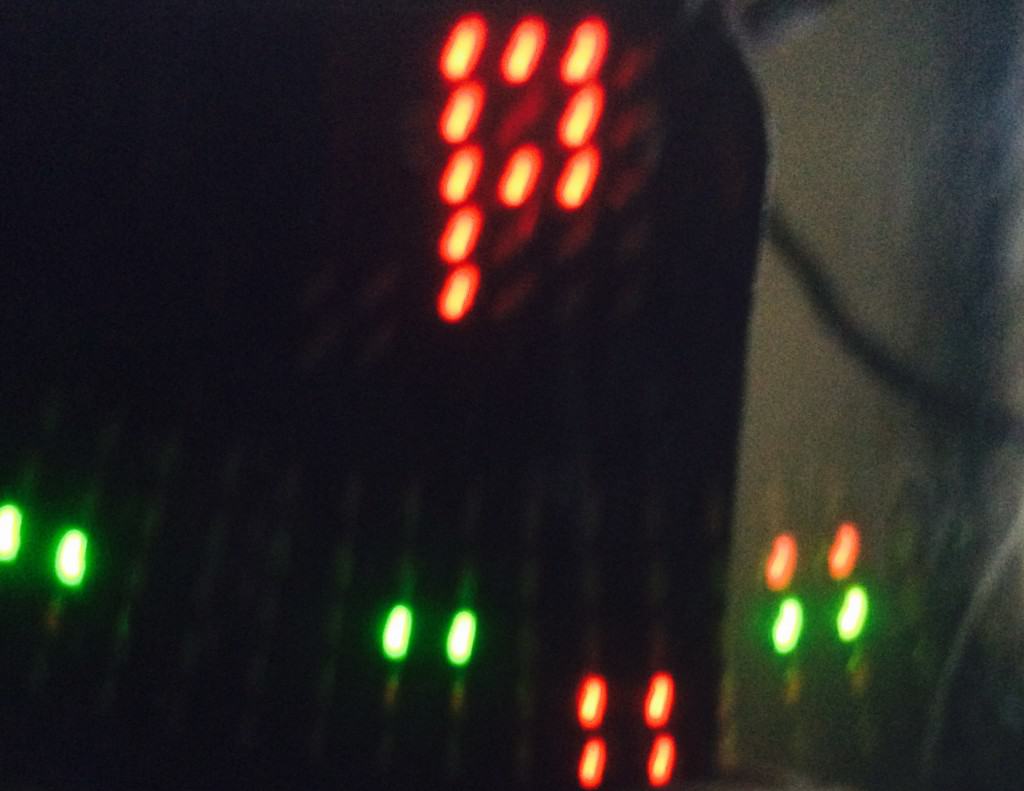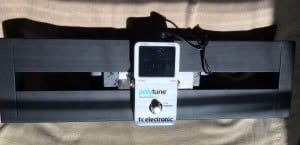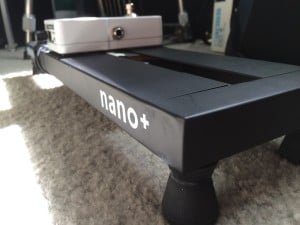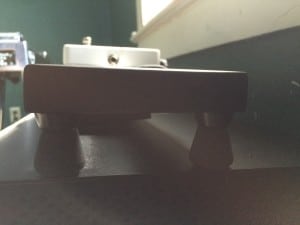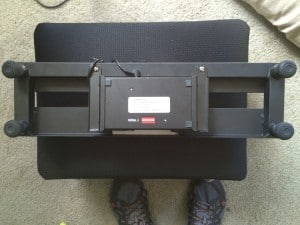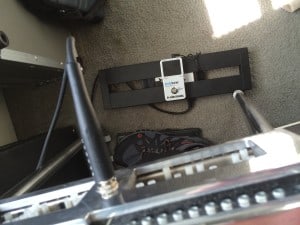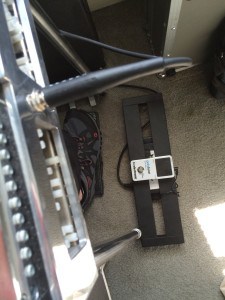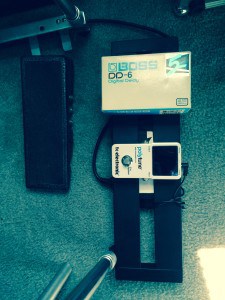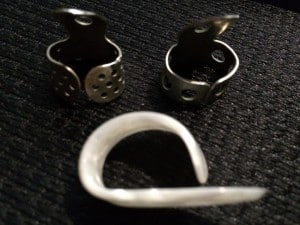Having a reliably-powered, sturdy, organized pedalboard for shows, recording sessions, or even practice is a plus. For pedal steel, it is a toolbox worth having for most jobs at hand. Since the pedal steel takes up so much floor space on-stage, it can be nice to keep your pedalboard setup simple and small. You can always have a bigger pedalboard rig when the occasion calls for it.
Here is one I crafted recently, that displays the benefits of a sleeker design. I only have a tuner on there now, as that’s all I’m using EFX/pedal-wise at the moment, but I often add a delay pedal and also a reverb pedal. This board design allows me to add or remove a couple of pedals, while still keeping it small/simple.
This is the main mounting structure. You’ll notice in these pics above/below, that I added extra pedal steel leg rubber-feet to the factory rubber-feet it came with. This added extra height underneath the board to securely attach my power supply, while still keeping the board stable and balanced.
Here you’ll notice the undercarriage of the board, which houses a reliable power supply that can handle/power most pedal types if configured properly.
A player’s view (above or below) of how little real estate this board takes up. It is right next to my volume pedal, which allows shorter 1/4″ cables to be run. For live gigs, this can help cut back on any unwanted noises coming from ground loops, dimmer lights, etc. that may show up in your guitar signal.
I have not included the cables in these pics, to make everything easier to see visually. When connected, they are easily hidden from view and organized via wrapping underneath/thru the pedalboard (this is how the board is designed). This keeps everything neat, tidy, and only shows the cables where needed.
With 1/4″ cables running for volume pedal and other pedals, as well as separate power supplies for the volume pedal and pedalboard, keeping the cables organized, tidy-looking, and secure on the bandstand is great. If you look closer at the pedalboard pics at the top of the page, you can see the design allows plenty of room for hiding, securing, or wrapping cables. Black zip ties work well to secure cables to the pedalboard, and they remove slack while somewhat camouflaging themselves.
Check out the gear section for more related articles on pedal steel gear…
